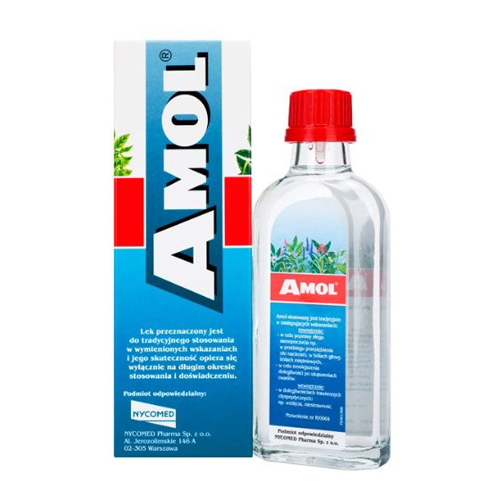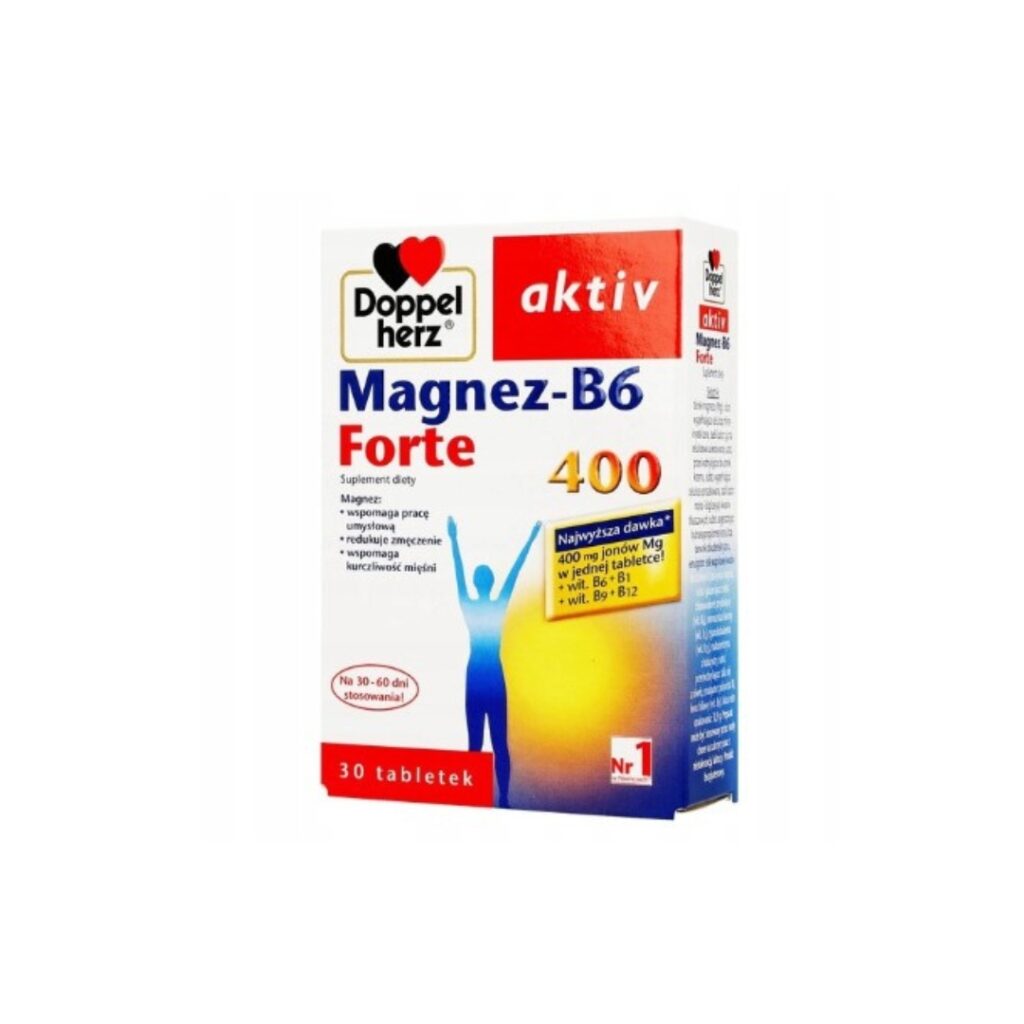Amol is a solution of menthol and a mixture of essential oils in ethanol. The active substances of Amol are: peppermint oil, the main ingredient of which is menthol; lavender funnel; citronella oil; cinnamon oil; clove oil; lemon oil; menthol. The action of the drug is due to the action of the individual active substances.
Symptoms
The drug is intended for traditional use in the above-mentioned indications and its effectiveness is based solely on long-term use and experience.
Amol is traditionally used for the following indications:
Outwardly:
- to improve malaise, e.g. in the course of colds, headaches, muscle pains;
- to reduce discomfort from insect bites;
Internally:
- in digestive (dyspeptic) ailments, e.g. flatulence and indigestion.
Active substance: Caryophylli aetheroleum, Cinnamomi cortex, Citronellae aetheroleum, Lavandulae aetheroleum, Limonis aetheroleum, Menthae piperitae folium, Mentholum
Composition
| The active substance | 1 g of Amol contains Mentholum (menthol) 17.23 mg; Citronellae aetheroleum (citronella oil) 1.00 mg; Caryophylli floris aetheroleum (clove oil) 1.00 mg; Cinnamomi zeylanici corticis aetheroleum (cinnamon oil) 2.40 mg; Limonis aetheroleum (lemon oil) 5.70 mg; Menthae piperitae aetheroleum (peppermint oil) 2.40 mg; Lavandulae aetheroleum (lavender oil) 2.40 mg. |
| the other ingredients | ethanol 96% (v / v), water |
Dosage
Recommended dose and method of use
- The drug should not be used under a dressing that restricts the access of air or in the form of compresses.
Adults and adolescents over 12 years of age:
- Externally for rubbing to improve malaise (e.g. in the course of colds, headaches, muscle aches)
- Rub a small amount of the drug undiluted several times a day.
- Externally to reduce discomfort from insect bites. Wipe the place after the bite with a swab soaked in the drug in undiluted form.
- Orally in digestive (dyspeptic) problems.
- 10 to 15 drops of the drug with liquid or sugar should be taken as a relief in case of symptoms, up to 3 times a day.
If symptoms worsen or do not improve, consult your doctor.
Contraindications
When should you not use Amol?
- if you are allergic to the active substances or any of the other ingredients of this medicine,
- in bronchial asthma and other respiratory tract diseases accompanied by severe respiratory tract hypersensitivity.
- in children under 12 years of age, due to the lack of sufficient research on the use of Amol in this age group.
Internally:
- in the case of obstruction of the bile ducts (e.g. in the course of cholelithiasis), cholecystitis;
- in people with chronic liver disease;
- in people addicted to alcohol.
Outwardly:
- on damaged skin, e.g. in burns, eczema and open wounds;
- in skin diseases with rash;
- on mucous membranes and around the eyes.
Storage method
15°C-25°C
Manufacturer
TAKEDA
Warnings
- Protect your eyes from contact with the drug. If Amol comes into contact with your eyes, rinse them with plenty of water. If symptoms persist, see your doctor.
- In the event of breathing difficulties (e.g. bronchospasm), a doctor should be called immediately, and in the event of skin lesions, a doctor should be consulted.
- Wash your hands thoroughly after rubbing with the Amol solution.
- The drug should not be used under a dressing that restricts the access of air or in the form of compresses.
- If additional information is needed, consult a physician or pharmacist before taking the drug.
Pregnancy and lactation
- If you are pregnant or breastfeeding, think you may be pregnant or are planning to have a baby, ask your doctor or pharmacist for advice before taking this medicine.
- There are no clinical data on the use of the drug during pregnancy and breastfeeding.
- Due to the lack of data on safety, the use of Amol during pregnancy and breastfeeding is not recommended.
Due to the content of ethanol, Amol may have an effect on the central nervous system.
Therefore, it is not recommended to drive or operate machinery after oral administration.
Amol contains ethanol.
Amol contains 67% ethanol (alcohol). When using the recommended dosage, after each oral intake of the drug in the amount of 10-15 drops, 0.46 g of ethanol will be introduced into the body, which is equivalent to 7.24-10.86 ml of beer (5% v / v) and 3.02- 4.53 ml of wine (12% v / v). Harmful for people suffering from alcoholism.
To be taken into account in pregnant or lactating women, children and high-risk groups such as patients with liver disease or epilepsy.
Side effects
The frequency of possible side effects listed below is defined as follows:
very rare (affects less than 1 in 10,000 people);
- Gastrointestinal Disorders: gastric irritation
- Skin and subcutaneous tissue disorders: irritation of the skin and mucous membranes, contact eczema, hypersensitivity reactions
- Respiratory, thoracic and mediastinal disorders: cough (dry), bronchospasm
Not known (cannot be estimated from the available data)
- General disorders and administration site conditions: injection site burns.




